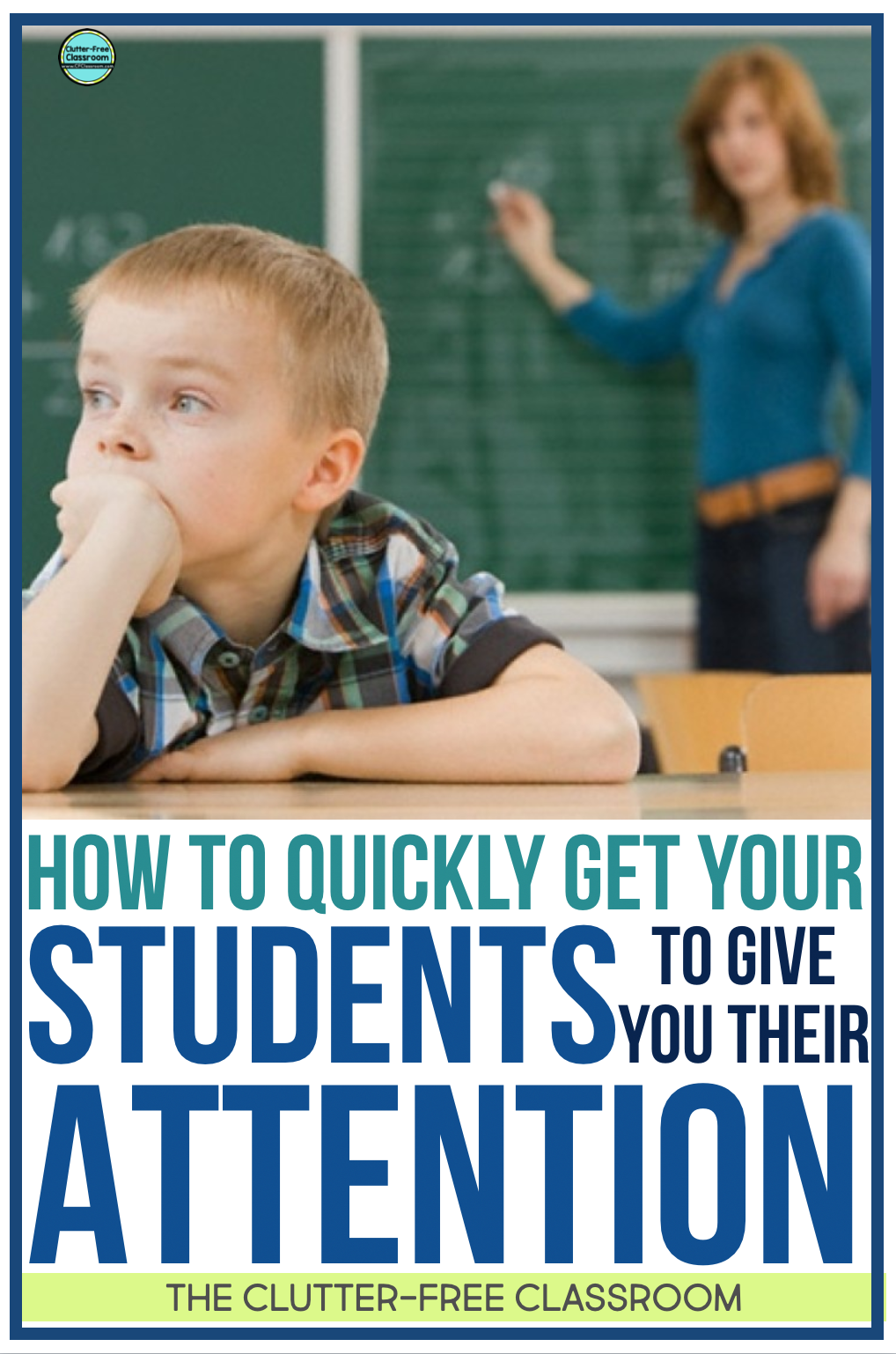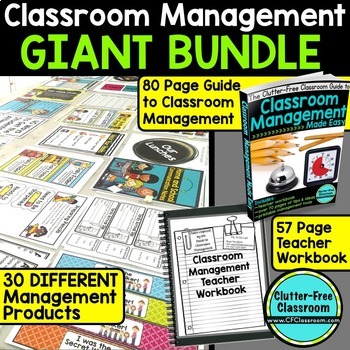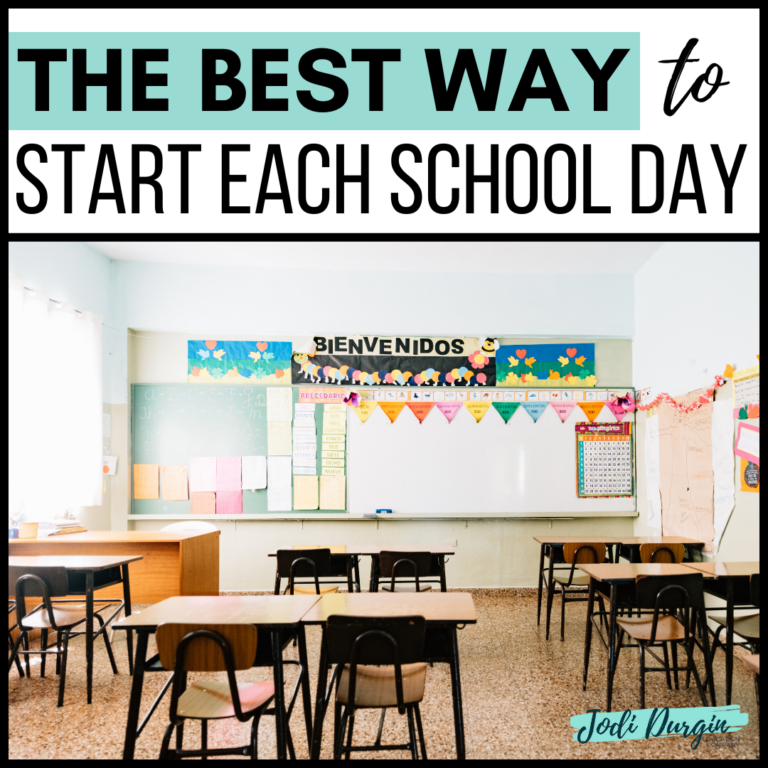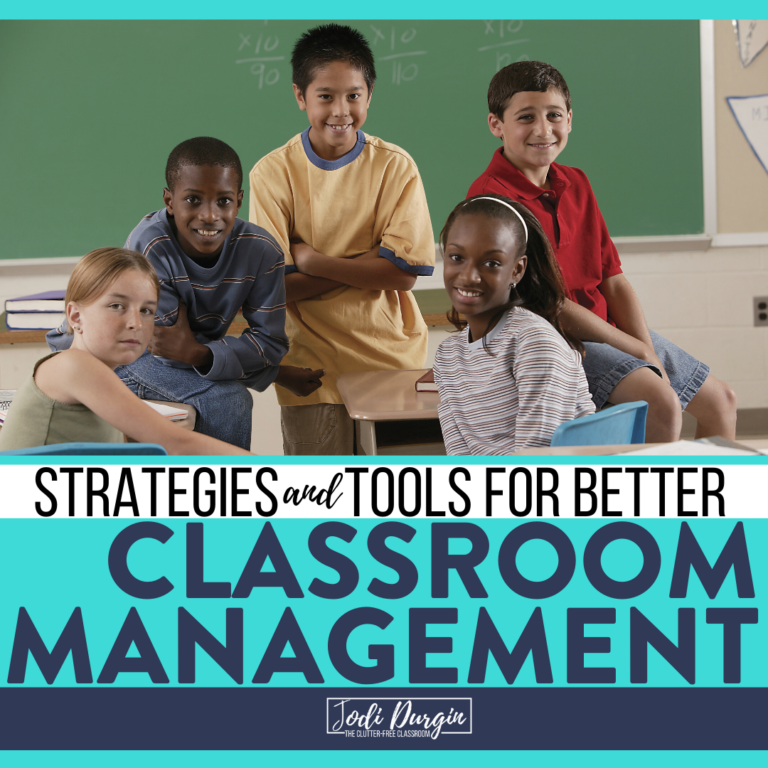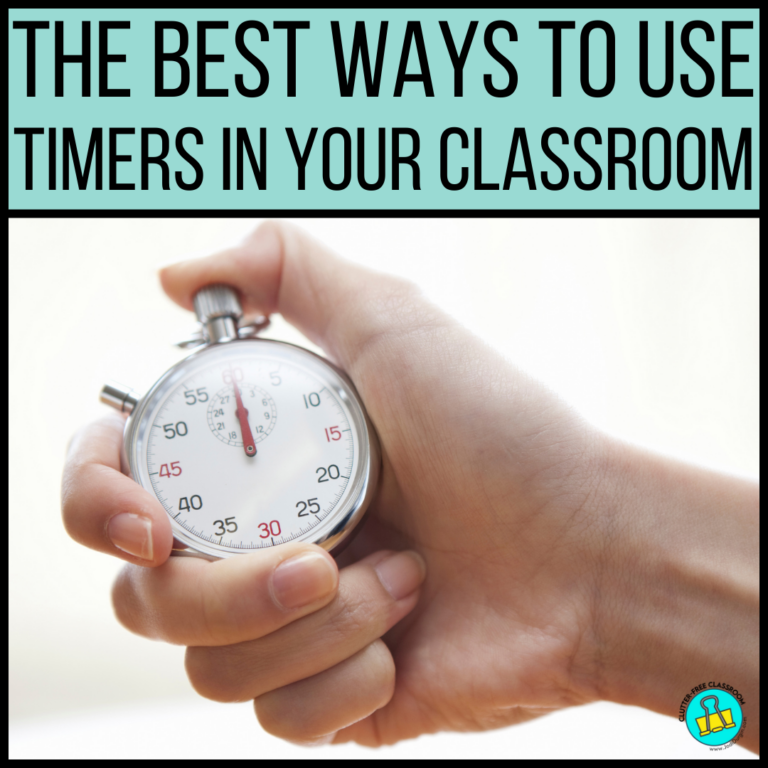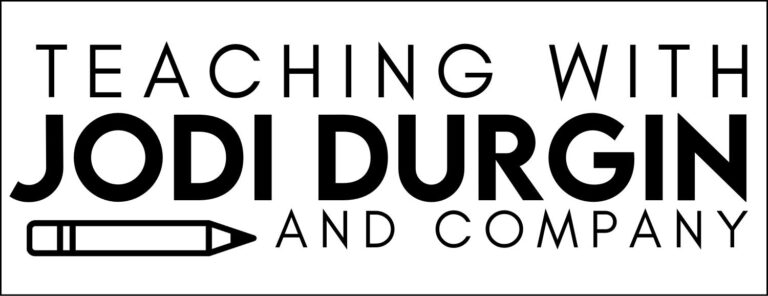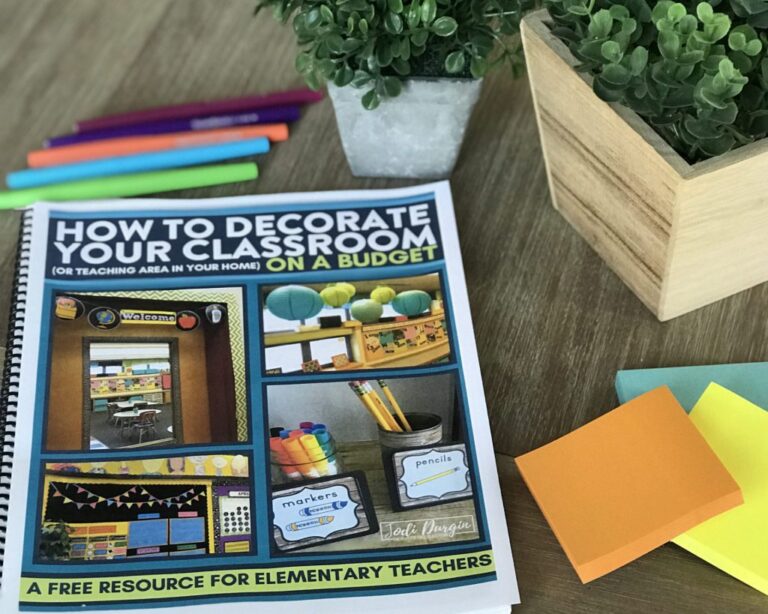Before I dig into all of the attention grabber examples, let’s start at the very beginning of my classroom management journey.
When I graduated from college, I worked as a classroom aide for the first and second-grade level team. There was one first grade teacher who amazed me. Her room would be all aflutter with little people chatting and moving and everything else that comes with being 6 years old. And then this teacher would just start talking. She would simply say, “Boys and Girls…(insert whatever she needed to tell them)” and the entire class would freeze, look and listen. Just by talking in a normal tone at a conversation volume. WHAT? I still don’t know what kind of voodoo spell she cast over them to make that magic happen, but I assure you, I have never seen it replicated anywhere or at any time.
I gave up trying to figure it out and instead worked on developing creative ways to get my students attention (including the attention grabber examples I will share below) and fine-tuning the art of only teaching when the students are focused and on task. To master this you need to be consistent in your expectations and classroom management skills and invest time in making sure the items below become second nature to your students.

What is an Attention Grabber?
An attention grabber is a signal you use to get students to focus their eyes and ears on you so you can teach or give directions. It is one of the very first things you should teach each school year. Attention getters are also used when the class has become loud or off task and you need to redirect them. The level of noise, your location at the time and the specific situation will determine the type of attention getter you will want to use.
Why are Attention Grabbers Important?
Attention grabbers are important to have because they help you get your students’ attention in the case of an emergency. In addition, they help you manage your classroom more easily.
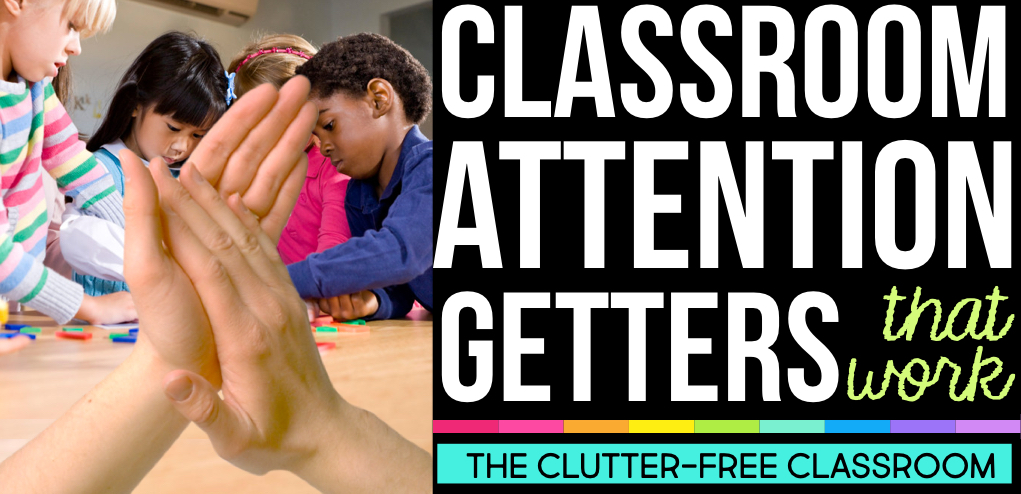
Attention Grabber Examples
Below are some attention grabber examples you can use with your students.
Beginning of the School Year
Because you will have not yet formed a relationship with the students or know what to expect of them as individuals, you will want to first introduce a method of getting their attention that is obvious.
1. Shutting Off the Lights
One method I always found to be most effective is shutting off the lights. It cuts through the noise and commands their immediate attention. Instruct them to freeze and turn to you when they hear it. Practice a few times immediately.
2. Ringing a Bell
Another grabber for the beginning of the year is ringing a bell. It’s another one that cuts through the noise and commands their immediate attention. Instruct them to freeze and turn to you when they hear it. Practice a few times immediately.
3. “If you Can Hear Me…”
The next signal I introduced (and the one I used most often throughout the year) was a verbal cue. I would quietly say, “If you can hear me clap once.” The nearby students would clap which alerted other students. I would then say, “If you can hear me clap twice.” The students would clap two times and the clapping got the attention of the other students. There were noisier times when I would need to tell them to “stomp three times” or I would tell them, ‘If you can here me say ‘whooop whoooop!” This silenced the room fast. When we were in the hallway or another area where clapping and stomping was not appropriate I would say, “If you can hear me touch your nose” or “If you can hear me whisper, ‘shhhh.”
Throughout the School Year
As the year goes on, strive to find ways to keep things new and interesting. Introduce call back phrases and signals. Elementary students love these types of attention grabbers! Let your specialist teachers know which attention getter works best with your class. They probably have their own methods, but sometimes it is nice to have consistency if it is a challenging cohort.
1. “Macaroni and Cheese… Everybody Freeze”
An example would be the teacher saying, “Macaroni and Cheese” and the class responding with “Everybody freeze!”.
2. “Alligator, Alligator… Chomp, Chomp, Chomp”
Another example would be the teacher saying, “Alligator, Alligator” and the class responding with “Chomp, Chomp, Chomp” while clapping their hands like an alligator.
3. Clapping Pattern
Another popular method is to clap a pattern and have the students repeat it.
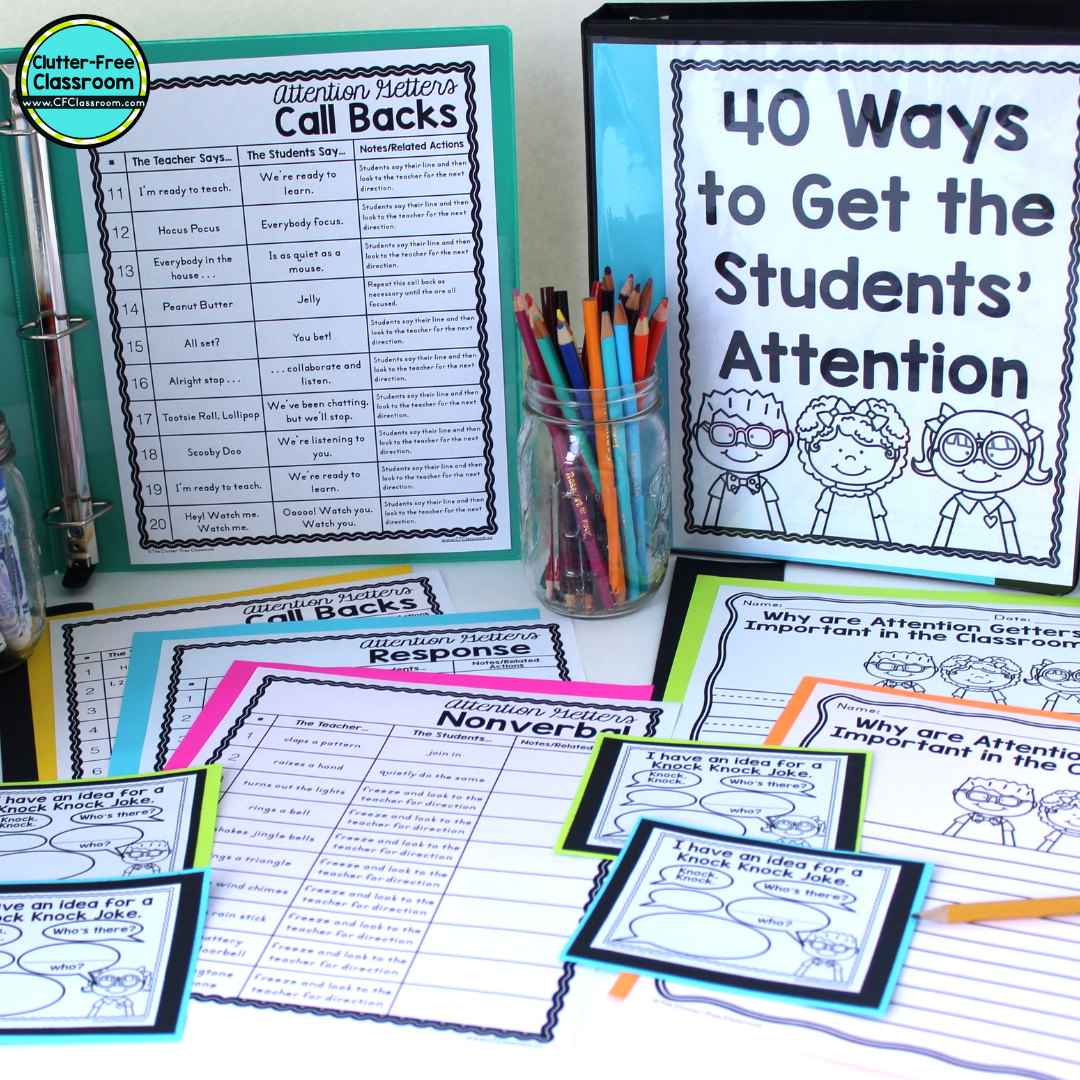
Other Listening Strategies
Below are 3 other listening strategies to add to your classroom management tool kit this year.
1. Active Listening Skills
In addition to using lots of attention grabber examples, you will need to explicitly teach your elementary students active listening strategies.
I’ve often heard teachers say, “You need to pay attention.” I’ve said it myself. However, in order to expect children to be focused and attentive, teachers need to take some time to specifically explain to the students what that means.
When I was going through the process of becoming a National Board Certified teacher I needed to plan, record and analyze specific lessons. The lesson had to include not only the content area material I was focusing on but also a social skill to target.
I had to show evidence of that skill in the video, so I started by recording several of my lessons. I positioned the camera so that it captured all the children from the front. If you have never done this I highly recommend it. You will be amazed at what you learn about your students and your teaching when you view it from the outside.
For me, I noticed that although my students were meeting behavioral expectations and following the routines, many were not actively listening. I made that my social skill target goal and based on the success I saw with that cohort, it became a skill I set aside time to teach every year after.
2. Whole Body Listening
Whole body listening is a way of listening and responding to another person that improves mutual understanding. I began by letting them know what it means to be a“whole body listener.” We discussed how our bodies should look, what we should be doing and how we should be responding when we are listening. We brainstormed reasons why the skill was important and the risks of not doing it.
To help them better understand, I read them a story I knew would not be familiar to them. I told them that when I was reading I wanted them to be looking at me and sitting quietly, but I also wanted them to be thinking about other things. I even gave them topics. The story was about a boy’s birthday party. As I began to read I asked them to remember a really fun birthday party they attended. I told them to replay that party in their mind while I read. Afterwards, I asked them questions about the passage. I pointed out how hard it was to answer the questions because even though it looked like they were listening, they were actually focused on something else.
Check out this classroom management resource!
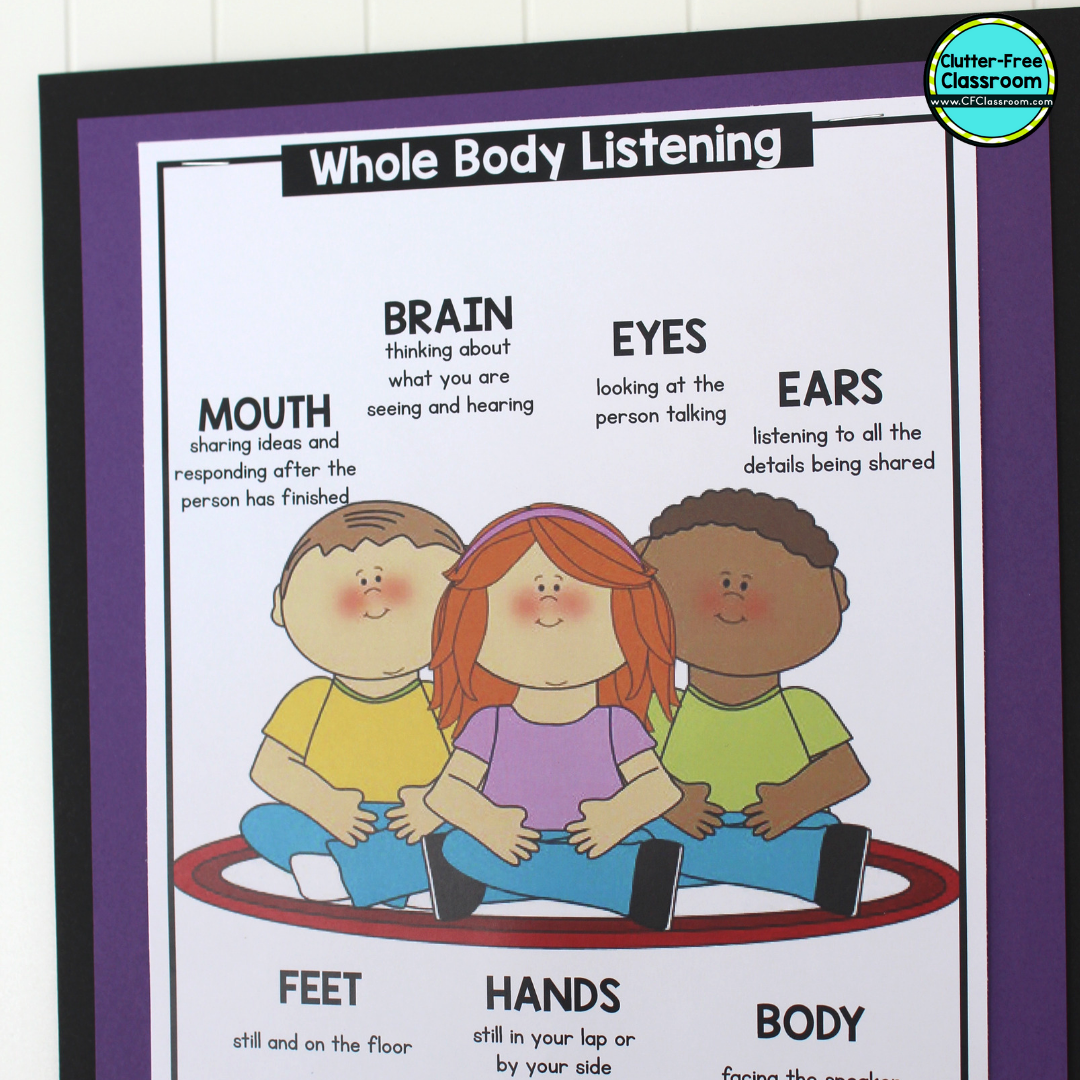
Next, I specifically explained and modeled how to listen with the whole body. I created a chart showing how they should look and referenced it as a reminder before each lesson. As time went on I could simply cue them by saying, “This is important. I need you to listen with your whole body.”
3. Establish a “Listening Look”
Teaching active listening skills and “whole body listening” takes time. The problem is that you need their attention from day one.
To start, simply establish a “Listening Look.” This shows that the students are focused on the speaker. In my classroom, a listening look includes hands clasped together (so as not to be touching/fidgeting with anything) with eyes and ears on the person speaking.
I certainly don’t expect the class to be in this position throughout every lesson and conversation. Instead, I save it for important messages and guests. For example, if the principal came in to tell them something I would say, “Friends, please stop what you are doing and give Mr. _ a listening look.”
I also use it to signal heightened importance or to redirect them if it is getting a bit chaotic. It’s much nicer to say, “I need a listening look” and have a hush fall across the room than to point out that it’s too loud…too crazy…too whatever.
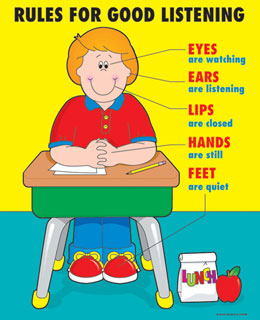
This poster was something I purchased during my very first year of teaching. It took residence in 2 states, 4 schools, and 8 classrooms before being retired. We now create an anchor chart using a photo of my actual class sporting the listening look.
Stand at the front of the room and have your students give you their best listening look. Snap a photo. Print it as large as you can. Label what is happening (hands clasped, facing the speaker, mouths closed, etc). It’s effective. I like being able to say, “You should look like your picture.”
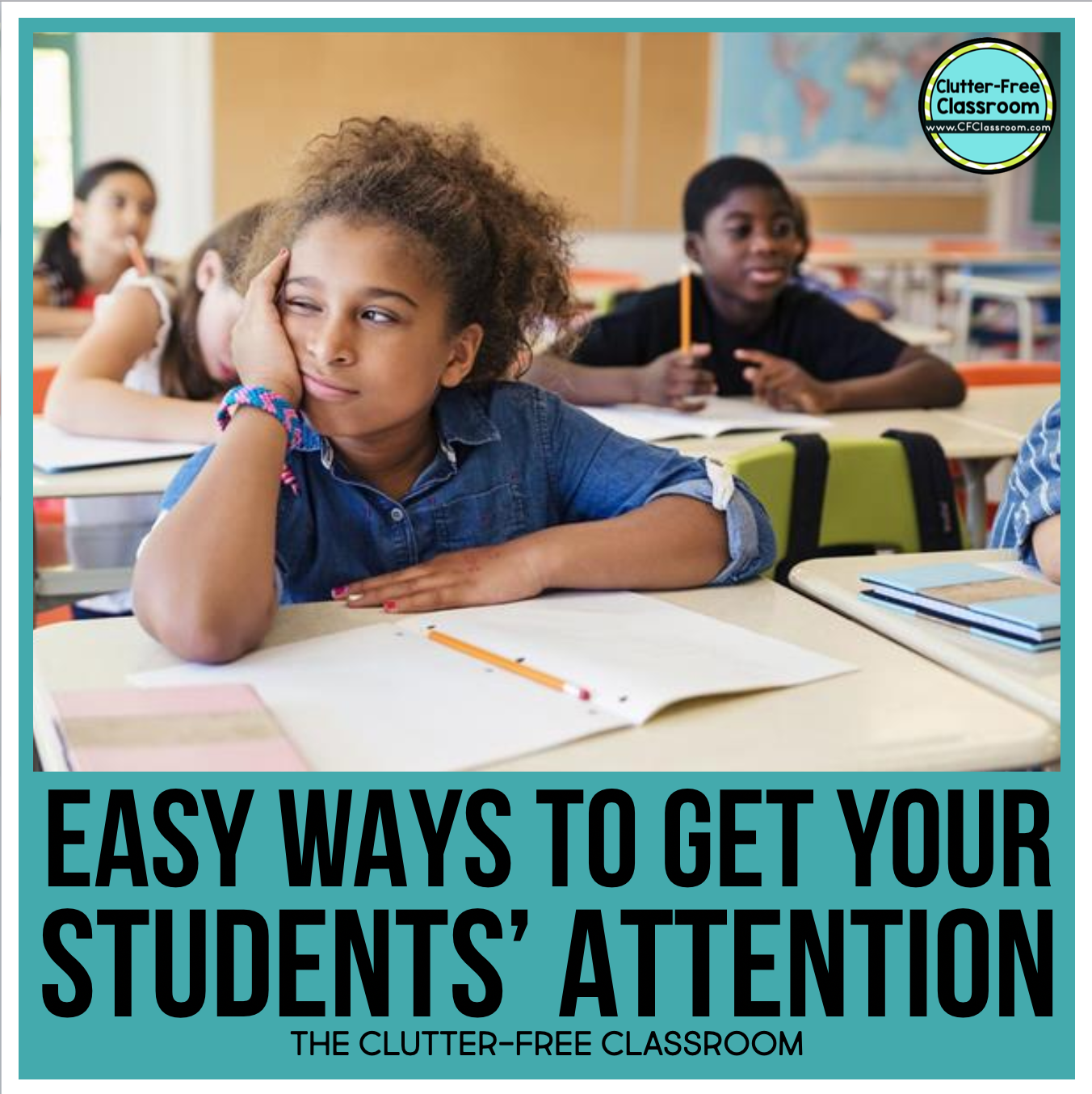
Classroom Management Resources
I hope you found this information about attention getters and all of the attention grabber examples helpful! If you did, check them out below, as well as my other classroom management resources.
In closing, we hope you found these attention grabber examples helpful! If you did, then you may also be interested in these posts:
- Classroom Management Strategies for a Chatty Class
- Classroom Management Strategies for 1st-5th Grade Teachers
- Behavior Management Strategies for Elementary Teachers
